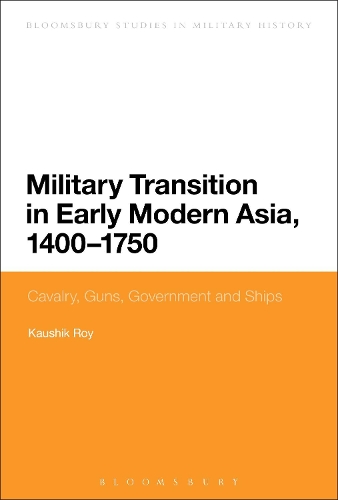
Military Transition in Early Modern Asia, 1400-1750: Cavalry, Guns, Government and Ships
(Hardback)
Available Formats
Publishing Details
Military Transition in Early Modern Asia, 1400-1750: Cavalry, Guns, Government and Ships
By (Author) Dr Kaushik Roy
Bloomsbury Publishing PLC
Bloomsbury Academic
22nd May 2014
United Kingdom
Classifications
Tertiary Education
Non Fiction
Military and defence strategy
Weapons and equipment
355.033050903
Physical Properties
Hardback
288
Width 156mm, Height 234mm
603g
Description
A substantial amount of work has been carried out to explore the military systems of Western Europe during the early modern era, but the military trajectories of the Asian states have received relatively little attention. This study provides the first comparative study of the major Asian empires' military systems and explores the extent of the impact of West European military transition on the extra-European world. Kaushik Roy conducts a comparative analysis of the armies and navies of the large agrarian bureaucratic empires of Asia, focusing on the question of how far the Asian polities were able to integrate gunpowder weapons in their military systems. Military Transition in Early Modern Asia, 1400-1750 offers important insights into the common patterns in war making across the region, and the impact of firearms and artillery.
Reviews
Given the size of the topic and I can think of no comparable work of such ambition this is, as the author, readily admits a work of synthesis but it is a very impressive one that is built on a staggering array of secondary materials ... Roy has done a great service to the field by surveying the military landscape across early modern Asia and Military Transition in Early Modern Asia makes an important contribution to the debate over the global dimensions of the Military Revolution. -- Adam Clulow, Monash University * Australian Journal of Politics and History *
provides another useful stepping stone to further studies of military relations between the West and Asia in the early modern period. * The Historian *
Author Bio
Kaushik Roy is Guru Nanak Professor in History at Jadavpur University, India and Global Fellow at the Peace Research Institute Oslo, Norway.
